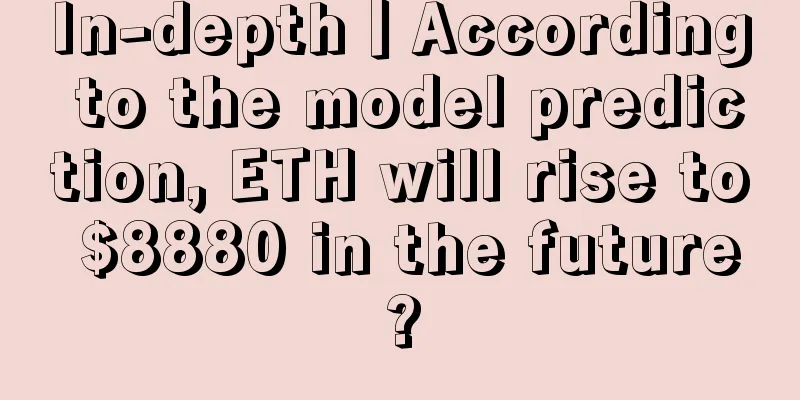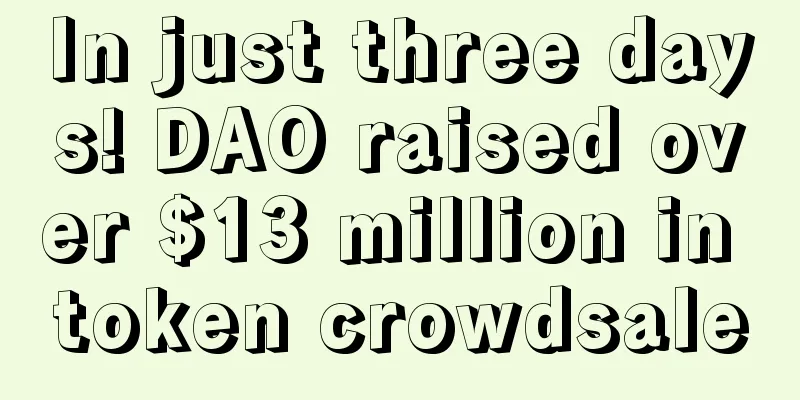In-depth丨According to the model prediction, ETH will rise to $8880 in the future?

|
By AARON VAN WIRDUM Introduction Inspired by PlanB's stock-to-flow regression model, I developed a regression model for Ethereum using the network's total daily fees. The basic argument for Bitcoin is that it is a store of value, similar to gold, so the stock-to-flow ratio is a useful basis for analyzing Bitcoin's value. I believe that the basic argument for Ethereum is that it is a settlement layer, a transaction network capable of hosting economic and non-economic decentralized applications. Since Ethereum is a settlement layer, it makes sense to analyze the value of the Ethereum network using the total daily fees processed on the network. Daily Fee Regression Model The figure below is a regression model based on the daily fees processed on the Ethereum network and the price of Ethereum since August 2015. Charts made with Excel and CoinMetrics Data source: https://coinmetrics.io/community-network-data/ As can be seen, the model has an R-squared value of 94% over a time frame of approximately five years (August 2015 to December 2020), which represents a statistically significant correlation. I noticed that there were three major phases that correlated with three price ranges for Ethereum. Similar to PlanB's phase model, I summarized these three periods as phases and their daily transaction fees and Ethereum price averages as follows. In the first phase (August 2015 to September 2015), daily fees were approximately $20 and the average price was approximately $1. In the second phase (May 2016 to February 2017), daily fees were approximately $500 and the average price was approximately $11. In the third phase (December 2017 to December 2020), daily transaction fees were approximately $500,000 and the average price was approximately $33. Daily fees consist of two parts: the number of transactions per day and the average fee per transaction. These two parts multiplied together equal the total daily fees. I decided to break these two parts down and analyze them separately to assess whether a model could be built using them. Daily Transactions In order to count the number of daily transactions, I evaluated transactions at the level of transactions per second (TPS). Below is a time series graph of the Ethereum network’s transactions per second. Graph made with Excel and CoinMetrics Data source: https://coinmetrics.io/community-network-data/ The three phases of transactions per second and the corresponding average TPS are outlined below.
Average Fee per Transaction When calculating the average fee per transaction, I took the average fee per transaction over the same time period as the TPS graph. Chart made with Excel and CoinMetrics Data source: https://coinmetrics.io/community-network-data/ The three phases of average fees per transaction are outlined below Phase 1: $0.004 per transaction Phase 2: $0.01 per transaction Phase 3: $0.7 per transaction Simulated price vs. daily transaction fees I have determined the highest, lowest, and average transactions per second for the three phases and the corresponding transaction fees for those specific days. In the table below, there are three main sections: "Maximum", "Minimum", and "Average" in which I have determined the TPS and transaction fees for each phase. For example: 0.81 is the maximum TPS determined on the Ethereum network during the second phase time period, and the corresponding transaction fee was $0.014 on that day. The total transaction fee for that day was approximately $962, and the price predicted by the regression model was $15.6 . I have outlined the fourth phase, and I believe the maximum TPS capacity will increase once ETH 2.0 is deployed. For simplicity, I outline three scenarios for Phase 4; a 5x, 10x, and 15x increase in TPS and transaction fees from Phase 3 . Charts made with Excel and CoinMetrics Data source : https://coinmetrics.io/community-network-data/ Model price is calculated using the regression formula Y=0.4018X^.5324 outlined at the beginning The model appears to have a high correlation with the actual price observed at each instance in terms of "max", "min", and "average". For example: The lowest TPS observed in period 3 was 4.41 and the transaction fee was $0.1. This led the model to calculate a minimum price of $99.8 for period 3 and a minimum price of $82.8 for this period. Estimating for period 4 (5x) seems conservative, as it would mean a maximum TPS of 81.4 and a transaction fee of $20.6 for period 4, resulting in a maximum model price of about $8,880 . The table below lists the historical percentage growth of TPS and transaction fees for periods 2 and 3. Charts made with Excel and CoinMetrics Data source: https://coinmetrics.io/community-network-data/ Use the four-stage price model to apply the highest TPS and transaction fees of the four stages (5 times in the fourth stage) to the following chart. Inspired by Plan B’s stage model [2] , four stages (with a 5x scenario as a conservative measure) are modeled with actual prices, resulting in a model similar to Plan B’s stock-to-flow model for Bitcoin, but using daily transaction fees on the Ethereum network. Charts made with Excel and CoinMetrics Data source: https://coinmetrics.io/community-network-data/ The fourth phase (5x) scenario means the highest price is about $8,880, the lowest price is about $554, and the average price is about $2,515 . Tracking model price vs. actual price Using the regression formula to compare the total daily fee and the actual price, we can see that the current model indicates that the price of Ethereum is $1,200 (December 30) and the actual price is about $750. Red indicates that the actual price is much lower than the model price, and blue indicates that the actual price is higher than the model price. The ETH price is the Y value, and the model price is the 30-day moving average.
Chart made with Python and CoinMetrics Data source: https://coinmetrics.io/community-network-data/ Evaluating whether the actual price is lower or higher than the model price by percentage, we can get the following chart. Interestingly, we notice the symmetry of the "too high/(too low)" difference.
Charts made with Python and CoinMetrics Data source: https://coinmetrics.io/community-network-data/ Conclusion Ethereum has a high value proposition as a settlement layer for innovative economic and non-economic decentralized applications. As a settlement layer, historical daily transaction fees provide us with an analysis of Ethereum's historical prices. The model presents a high correlation between daily transaction fees and ETH price, so any increase in network transactions per second and future average fees per transaction seems to be correlated with an increase in the Ethereum network valuation . The model predicts a conservative maximum price of about $8,880 in the next phase, which will occur when transactions per second increase significantly from the current average of 8.9 TPS in the third phase. The launch of ETH 2.0, which provides higher transactions per second, could be a catalyst for increased network usage and higher prices per ETH. Edited by Sherrie The content is for reference only and is not intended as investment advice. Please assume all risks All rights reserved. Reproduction without permission is strictly prohibited. |
<<: RTX 2080 price rises by 1,000 yuan: Miners are going crazy
>>: Inventory: Five major events that promoted the popularity of cryptocurrencies in 2020
Recommend
Which people prefer to eat vegetables?
Vegetables and fruits are actually very good thin...
In the development of blockchain industry, overseas technology giants are competing to make layout
Microsoft recently released a preview version of ...
What does a mole on the upper right corner of the mouth mean?
Moles are inevitable existences in our body. They...
Palmistry of women who are not suitable for marriage
Marriage is every woman's support, and marria...
F2Pool Fish Pool - BitExpress 21T R1 Miner Review
BitExpress is a new mining machine developed by a...
Your marriage and love type from the wisdom line or the love line
Generally, the relationship status or marriage ty...
Will Egypt's Baraka Bank Make Bitcoin More Popular?
Governments and banking institutions are tighteni...
A detailed analysis of the Antminer S17 Pro
Written by: Jack, Layout by: Ann WeChat Official ...
What does it mean and what are the characteristics of a woman who is a nuisance to others?
Many boys find girls difficult to understand, som...
How to read eyebrows in physiognomy
Everyone has eyebrows, but everyone's eyebrow...
How to judge whether a woman is a bad luck
Judging or predicting a person's fortune and ...
China FinTech Innovation Conference
[Abstract] FinTech has become the most fashionabl...
Mole analysis: What does a mole on the nose (left) mean?
Looking at the nose, in fact, the meaning of the ...
Bitcoin breaks through $11,200, with 24-hour trading volume exceeding $90 billion
For Bitcoin investors, $10,000 is an important ps...
What kind of face does a woman have?
A good face for a woman can also represent her go...









